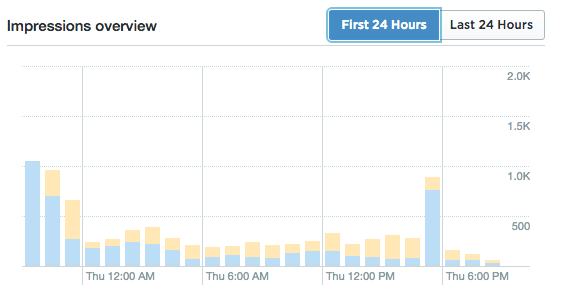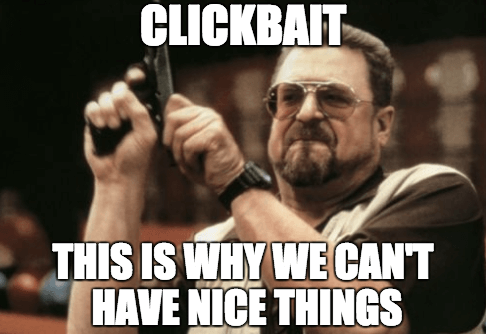Awesome at paid search, but struggling with paid social? Check out columnist Larry Kim's tips for getting the most out of your social PPC initiatives.
My last column on crazy CRO hacks for search ads was so popular, I didn’t want to leave out the marketers toiling away in social media PPC ads. Just a few years ago, social PPC wasn’t even a thing yet; today, it’s a promotional powerhouse for both branding and performance marketing objectives.
If you feel like you’re throwing money at social PPC but not seeing the best return possible — or worse, you’re doing it because you feel like you should but really aren’t sure how you’re doing — check these out.
Quick Note: For the purpose of this article, we’re focusing only on social PPC as it’s available on Facebook and Twitter. Why? They’re really the best social ad venues in town right now. Pinterest and other networks might be good depending on your niche, but LinkedIn… how do I say this nicely… LinkedIn has some catch-up work to do on their PPC platform.
Here are my three top social PPC hacks to get crazy engagement and boost your ROI:
1. Pick Your Winners & Promote Them Like Crazy
If you feel like your sponsored posts and tweets aren’t performing well enough to justify the spend, it’s entirely possible that you’re just choosing the wrong content to promote.
One of the things I do religiously before even writing a piece of content is I test out the idea on my social channels. If no one is interested in the concept, is it worth my time to write about it? Probably not.
Same idea with picking your winners for social PPC — you’re only going to promote the top 5% of your posts. The old way of conceptualizing, brainstorming, generating creative, etc. — this painstaking advertising process just doesn’t make sense when you have real-time insight into what your audience wants and thinks and reacts to.
Use your Facebook and Twitter analytics to identify tweets with at least 2x the average engagement within a few hours of posting. I’m going through my Twitter Analytics and looking for tweets like this that are already resonating with the audience. I want people to interact with my promoted content, too, so organic performance in real time with a real audience is about as great an indicator of potential paid performance as I’m going to get:

The higher your level of engagement, the lower your cost per engagement. Why? Because those engagements are how your paid content spreads beyond the clicks and retweets you paid for, to the organic social networks of those people.
So, as your organic activity starts to drop off, you promote the post/tweet, effectively extending its organic life, getting in front of a paid audience and expanding your reach, as shown here:

Key: Blue = organic impressions; Yellow = paid impressions
Boom. You paid to promote, and suddenly your organic activity is keeping up, too. It’s like buying one paid click yields two or three free clicks. It’s a beautiful thing.
2. Target Smarter
There are basically two ways to generate interest in your social content:
- Ridiculously awesome social updates with crazy visuals and/or click-baity headlines to stand out and capture the attention of the masses.
- Messing around with your ad targeting to get in front of just the right people.

Targeting isn’t the most interesting thing in the world, but you can get insanely specific with social ads. And you have to, really. If you’re putting your ads in front of people unlikely to care about what it is you’re sharing — who will ignore it, or maybe just click because they’re bored and it was either your ad or a new cat video — you’re throwing money away.
Both Facebook and Twitter are now partnering with third-party, offline data providers like Acxiom and Datalogix. Basically, these guys have a ton of real-world data like purchasing behavior, net worth, travel habits, credit card habits and a lot more. The social ad platforms match the user profiles from these data companies with the user profiles of social media users, so you can target some pretty crazy specific behaviors.

Where it gets really crazy, though, is when you start layering these insights over your Custom Audiences (on Facebook) or Tailored Audiences (on Twitter).
Say you have a list of 10,000, 50,000 or even 100,000 customers, blog subscribers, email subscribers, etc. You have all of these people you can remarket to using social PPC, which is huge for your brand awareness, recall and even conversion.
Layering real-world targeting data over that list allows you to get super granular and target really specific segments of your list with highly personalized content.
3. Pimp Your Social PPC Ride
Facebook and Twitter each have some pretty cool advertising features — and right now, relatively few advertisers are using them.
Let’s start with Twitter Cards. Basically, cards add extra functionality to your Twitter Ads. One you should definitely try out is the Lead Generation Card, which allows users to sign up for your offer with just two clicks.

Twitter already knows the user’s handle, name, and login email, so it autopopulates the fields for them. You can then download the CSV to export the information collected.
These are so easy to set up; you can either create a new one or choose an existing tweet:

Over on Facebook, you can add call-to-action buttons to your ads:

But you can also add click-to-call functionality right to your news stream ads for mobile users:
Of course, if you can skip the step where you send people to your landing page in an effort to get them to call you, you’re cutting out a whole stage of the funnel.
Test out all of the social PPC features available to you on the two biggest networks. These updates aren’t just for looks — they can radically change your ROI and boost engagement by making your ads more relevant and actionable to users.
Long story short: Engagement is critical in your social PPC ads. Likes, retweets, comments — all of these interactions help your paid content spread to organic users as well, improving your ROI. As much as I love paid search, it’s social PPC for the viral content marketing win!
From: Search Engine Land
Author: Larry Kim


